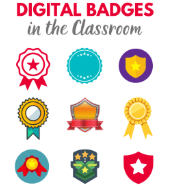In today’s evolving learning environments, digital badges are emerging as a powerful tool to recognize and encourage student growth. These small yet meaningful visual symbols are awarded to learners for completing specific tasks, mastering skills, or demonstrating positive behaviors. Far from being just decorative icons, digital badges serve as motivational tools that promote engagement and personal achievement.
Understanding Digital Badges in Education
Digital badges are visual representations of accomplishments that students earn through various educational activities. These may include completing a project, mastering a software skill, demonstrating leadership, or contributing to a team assignment. Each badge contains metadata that outlines the criteria met, the issuing institution, and sometimes even links to the work submitted by the student.
Unlike traditional grades, which often reflect final outcomes, badges highlight ongoing progress and specific skills. This approach supports a more personalized and holistic view of learning.
Why Digital Badges Inspire Motivation
One reason digital badges are so effective is that they break learning into manageable goals. Instead of focusing solely on end-of-term grades or certificates, students can earn recognition as they progress. This fosters a sense of accomplishment and keeps learners motivated throughout their academic journey.
Badges also appeal to students’ desire for visibility and self-expression. Sharing badges on digital profiles, classroom platforms, or even resumes allows students to showcase their strengths and personal interests in creative ways.
Encouraging Lifelong Learning Habits
The motivational power of digital badges goes beyond the classroom. When students become accustomed to tracking and showcasing their achievements, they develop lifelong learning habits. Badges can reinforce self-directed learning, curiosity, and the confidence to pursue new skills.
Educators can design badge systems to encourage exploration, creativity, collaboration, and goal setting. Whether it’s a badge for mastering basic coding, completing a reading challenge, or showing consistent punctuality, the recognition can go a long way in reinforcing positive behavior.
A Tool for Inclusive Recognition
Digital badges are also a great equalizer. They recognize achievements that traditional assessment methods might overlook, such as peer mentoring, community service, or innovation in group projects. This inclusivity helps students who may not always excel in written tests but thrive in other areas of learning.
Conclusion
Digital badges offer more than just a new way to reward progress—they are a modern motivational tool that helps students take ownership of their education. When thoughtfully implemented, they encourage continuous improvement, build self-esteem, and support the joy of learning.













